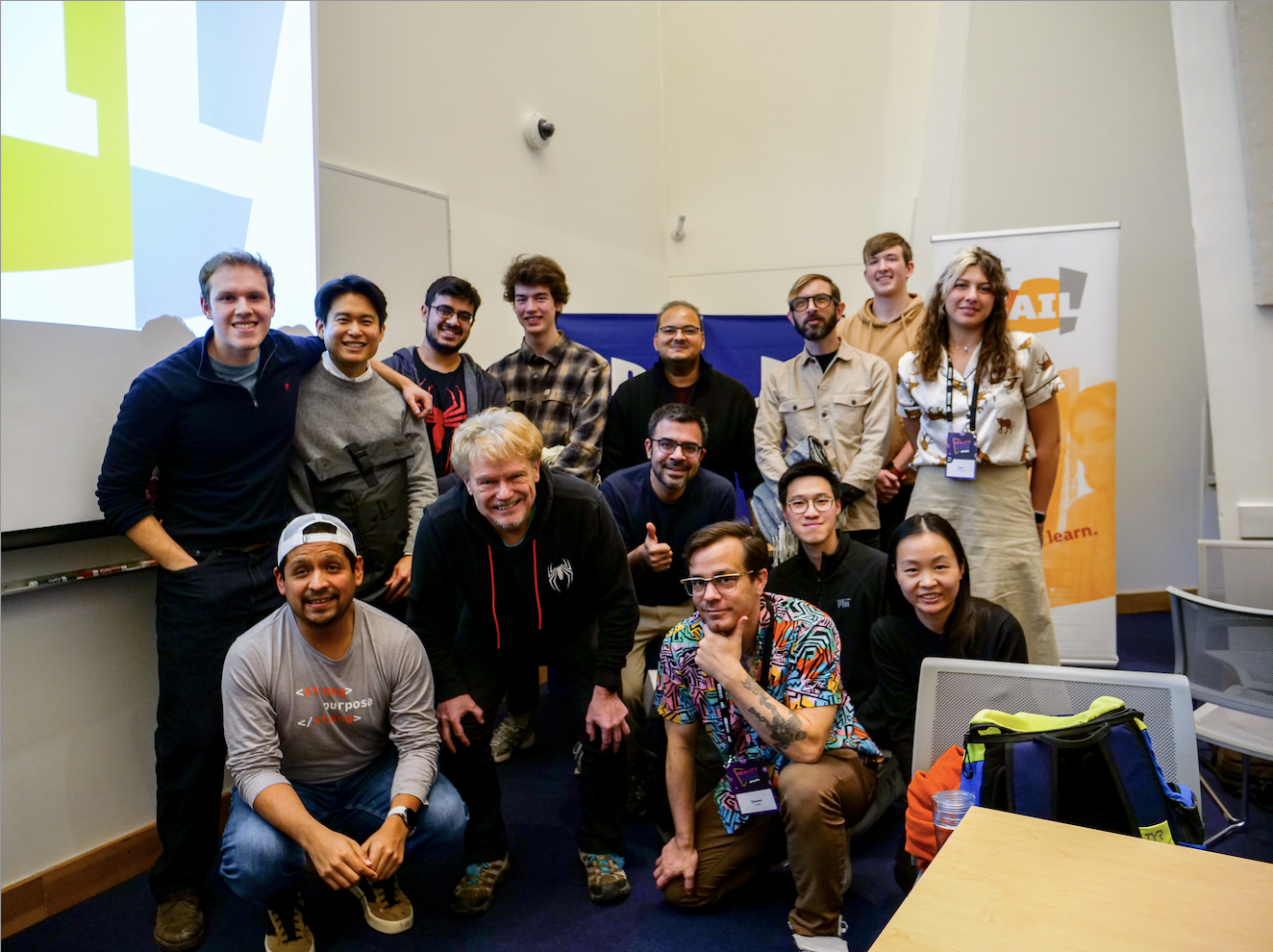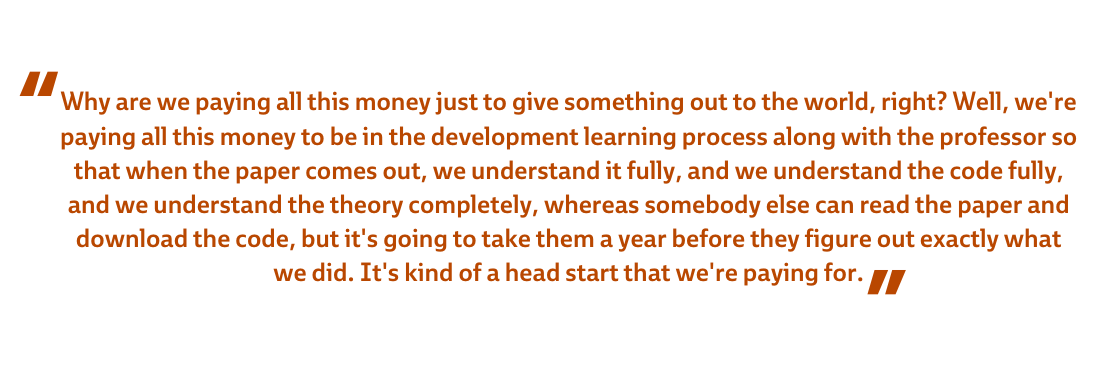Audrey Woods | MIT CSAIL Alliances
Every January, MIT students and faculty are given a monthlong hiatus from schoolwork and teaching in an Independent Activities Period (IAP). During this time, the MIT community is encouraged to pursue something they otherwise wouldn’t have the time or bandwidth for, allowing researchers to explore interests, experiment with new subjects, and learn about topics that fascinate them.
To capitalize on this period of increased student availability, CSAIL Alliances Affiliate Member Sony Interactive Entertainment (SIE) hosted a January 2025 IAP course, “The Nexus of Games and AI.” Designed to “introduce students to game creation, current game-related research, and an exploration of the technology, the art, and the fun of video games,” this course allowed SIE to engage with a broad range of students, meet CSAIL faculty, and deepen their connection to MIT CSAIL.
ABOUT SONY INTERACTIVE ENTERTAINMENT
Since the release of the original PlayStation in 1994, SIE has been pushing the boundaries of what’s possible with video games. Headquartered in San Mateo, California, with global functions in California, London, and Tokyo, SIE has created blockbuster games like The Last of Us, God of War Ragnarök, Helldivers II, Ghost of Tsushima, Horizon Zero Dawn, Stellar Blade, and Marvel’s Spider-Man 2. PlayStation currently has about 50 million global subscribers to PlayStation Plus and over 110 million monthly active PlayStation Network users . After launching the PlayStation 5 in 2020, Sony has sold over 55 million units of that console and 77.7 million games in the second half of 2024 alone.
Dr. Michael Stopa, SIE Senior Academic Manager, is dedicated to pursuing cutting-edge innovation and bringing the best technology to PlayStation gamers. He believes the key to creating top-notch games is to collaborate with top-tier universities and research institutions. “We’re not going to invent the future of AI by ourselves,” he jokes, explaining that the objective of his group within SIE is to “engage the best professors in the world to work together with our engineers.” Since joining Sony, Dr. Stopa—who earned his PhD in physics from the University of Maryland—has ramped up SIE’s academic engagement to include several full-scale collaborations across the United States and Canada.
One of the initial researchers Dr. Stopa contacted in his role at SIE was MIT CSAIL Professor Antonio Torralba. Dr. Stopa first met Professor Torralba at a showcase of AI researchers at MIT while working at a previous company. He was so impressed by Professor Torralba’s talk that, when he joined SIE, he immediately asked to collaborate. Soon, other researchers with SIE were working with CSAIL PIs like Assistant Professor Vincent Sitzmann, who recently presented a paper with Sony researchers at NeurIPS.
Building on that success, Dr. Stopa wanted to amplify SIE’s relationship with academia more broadly and MIT CSAIL in particular. “ I'm interested establishing a brand that that academics can turn to when they hear PlayStation,” he says, adding, “MIT is kind of special.” To build a stronger connection to MIT, SIE joined CSAIL Alliances and created the first ever IAP course hosted by a CSAIL Alliances Member.
IAP COURSE: THE NEXUS OF GAMES AND AI
When designing “The Nexus of Games and AI,” Dr. Stopa wanted to convey why games are a critical aspect of artificial intelligence research, and vice versa. While some might think of video games as straightforward entertainment, game developers depend on technological innovation to stay relevant and competitive. Big-budget video games rely on the latest developments in graphics, computer vision, cloud computing options, and AI. As the course description points out, “computers and gaming have grown up together.” There is also an undeniable connection between the computer science crowd and video games, with the technologically-inclined often participating in video game culture, sometimes going so far as to build their own games. Dr. Stopa claims, “it is not too much to say that the future of gaming (to say nothing of much of the future of the gaming community) can be found in today’s trailblazing university AI laboratories.”
Over 8 lectures plus a session to present final projects, students heard from Sony scientists, other academic collaborators, and CSAIL faculty about a range of topics related to the gaming world.
- Dr. Stopa introduced the class with an overview of what makes a video game, touching on the themes that would be explored in later lectures and discussing key terms such as reinforcement learning and Markov decision processes.
- Keri Carpenter, PlayStation Senior Engineering Manager, spoke about using LLMs to create game concierges and companions.
- MIT Professor Fox Harrell, Emmy Award-winning CSAIL PI, talked about the importance of avatars and virtual personas—especially in relation to race and identity—and the real-world impact of creating successful and accurate likeness in games.
- Gale Lucas, USC Associate Professor and SIE academic collaborator, discussed how cognitive science can be used to improve non-player characters and enhance game experience.
- Dr. Ram Barankin, PlayStation Senior Data Science Manager,offered strategies for using generative AI tools to gather user opinions and feedback from social media.
- Erick Flores, SIE Director of the Visual Computing Group, spoke about using AI to improve streaming in games, where minimal latency is critical to gameplay.
- Logan Olson, Haven Studios Director of Generative ML, discussed how games go from idea to development to completion, offering tips and tricks for leveraging generative AI tools in video games and beyond.
- Leanne Chukoskie, Northeastern Associate Professor, showed how games can be used to study movement and how virtual reality might help those with autism gain experience with the world.
Feedback on the course was overwhelmingly positive from both students and participants. CSAIL PhD student Ben Zandonati—who won the grand prize, a PlayStation 5 and set of brand new PS5 games—expressed, “it was super interesting to hear the breadth of ways in which AI is being applied in games, both from an industry side with Erick Flores, and from the more academic side with [Professor] Gale Lucas.” MIT Mechanical Engineering master’s student Alex Brush agreed, “I really liked how broad all the topics were. All the lectures went over so many different concepts, and it was really eye-opening to learn so many different things about games and artificial intelligence. And now I have a lot of bullet points in my notebook for what I want to do further research into and learn more about.” On the SIE side, Keri Carpenter emphasized the benefit to their team and strategy saying, “Sony, like many large organizations, is working tirelessly to take advantage of the new opportunities that artificial intelligence unlocks. We struggle to use and evaluate much of what is being produced in the AI world. It was amazing to work with the MIT CSAIL students to use some of these tools. Their work helped us assess which technologies to focus on incorporating into our platform in the coming months and years.”
For Dr. Stopa, the experience of creating and executing the course with the help of the CSAIL Alliances team exceeded his expectations. “ One of the best symptoms of things going well was that after every class, the students stuck around and talked with the lecturer, with each other, with me. Literally after an hour, half the class was still there. So it suggested that they were really engaged in it.” Many of the students even joined Dr. Stopa and the lecturers at a local bar to discuss ideas and follow up on what was discussed in class. “There were some really, really smart kids in that room,” Dr. Stopa says, joking that he’d happily hire at least one of them on the spot if he could.

LOOKING AHEAD: MORE IAP ACTIVITIES, STUDENT ENGAGEMENT, AND RESEARCH
Dr. Stopa is already excited to host another IAP course in 2026, this time in a bigger room to accommodate the immense interest. Due to unexpected demand, this inaugural session had 40 people on the waitlist, so Dr. Stopa hopes to find a way to invite all interested students to participate. He’s also planning to “get more participation from our side” by announcing his intentions internally well in advance, with the aim of bringing in high-level speakers and studio representatives from around the world to further engage the MIT and CSAIL community. There are other CSAIL Alliances membership benefits that Dr. Stopa is eager to leverage, such as attending the 2025 CSAIL Alliances Annual Meeting where he aims to meet more researchers and give a talk about the success of SIE’s IAP course. Generally, Dr. Stopa hopes to bring some of the “really bright people at MIT” in as interns, collaborators, and, eventually, as SIE researchers.
As a previous academic who has transitioned to industry, Dr. Stopa is sympathetic to the question of return on investment. He acknowledges that it can seem hard to justify funding papers or open source projects.

For that reason, he has every intention to keep growing SIE’s connection to academia, meeting students, sponsoring research, and contributing to the pool of knowledge that the video games of the future will draw from. As AI becomes more intertwined with gaming, changing everything from steaming methods to the dialogue of non-player characters, Dr. Stopa is thrilled by the unpredictability of it all. “What's going to come next?” he asks. Whatever it is, he wants to be a part of it and might even find it at MIT CSAIL.

